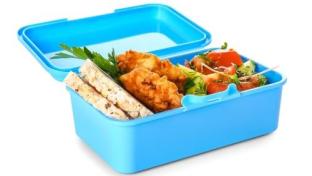Kicking Bad Food Habits

When it comes to kicking bad food habits, knowledge of psychology is a powerful tool that can help in the pursuit of improved health. Most people who have tried to break a bad habit or modify behavior can attest to the difficulty in making changes stick. This article focuses on the process of behavior change and the steps that can help make success possible.
Why Is It So Hard to Change Behaviors?
Recently, the “Hidden Brain” podcast featured Dr. Anna Lembke, a Stanford Medical School psychiatrist, researcher and author of the new book “Dopamine Nation: Finding Balance in the Age of Indulgence.” The July 2023 episode, “The Paradox of Pleasure,” provides an understanding of how our brains are hard-wired for pleasure. Dopamine, also called the “feel-good chemical,” is part of the reward system in our brains that helped us to evolve and survive for thousands of years.
[Read more: "Wellness Education Programs Give Grocers a Competitive Edge"]
In modern times, we don’t have to overcome many obstacles to find food or pleasure, and as a result, this reward system is triggered when consuming any food, whether it’s good or bad for us. Have you ever wondered why it’s hard to stop at one potato chip? That’s dopamine at work. When we give into cravings and urges repeatedly, our tolerance for dopamine increases, meaning that we need more to experience the same level of pleasure.
To overcome the powerful influence of dopamine in reinforcing bad habits, Dr. Lembke recommends a 30-day dopamine “fast” to break the cycle of dependence. Going “cold turkey” is an effective method to recalibrate dopamine levels that can help us to manage addictive behaviors, but it doesn’t help us with the process of changing or improving habits. In contrast, “Atomic Habits” by James Clear offers a four-step process that can help anyone break bad habits and form new, healthier ones. This four-step process can be viewed in two phases: The problem phase (steps one and two) and the solution phase (steps three and four).
- The 1st step is the cue, or piece of information (trigger) that signals to the brain that there’s a reward to be found.
Example: You smell freshly baked cookies. - The 2nd step is the craving — the motivational force behind every habit.
Example: You begin to crave a chocolate chip cookie. - The 3rd step is the response, or the actual habit that results from the craving.
Example: You buy a cookie on a break from work. - The 4th and final step is the reward, or the end goal that completes the habit cycle.
Example: You satisfy your craving to eat a chocolate chip cookie. Buying a cookie becomes associated with taking a break from work.
Breaking down the process of behavior change into steps and identifying small practical substitutions, or “nudges,” can make it possible to adopt healthier behaviors. As an example, to eat more fruits and vegetables, use avocado instead of butter or cheese at meals to boost fresh produce intake. Nudges are intended to be subtle to facilitate and automate desired behavior changes. Practice helps! In response to the cue and the craving in the cookie example, how could you automate a healthier response and reward? Troubleshooting in advance can help you avoid automated dopamine-driven responses.
According to “Atomic Habits”: “You do not rise to the level of your goals. You fall to the level of your systems.” Enlist the support of a registered dietitian/nutritionist who can help every step of the way with successful behavior change.







.teasere3d4.png)